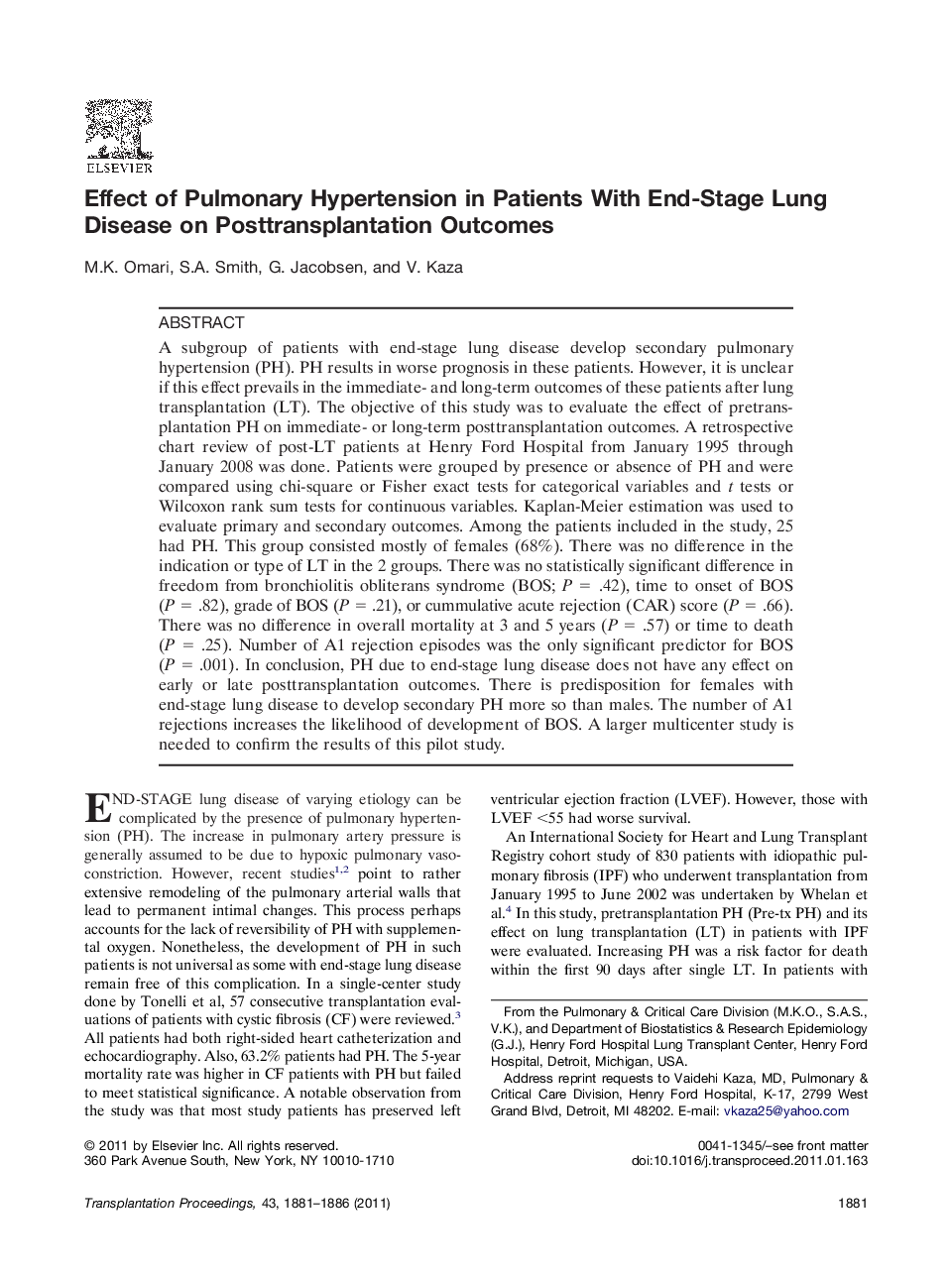| Article ID | Journal | Published Year | Pages | File Type |
|---|---|---|---|---|
| 6249367 | Transplantation Proceedings | 2011 | 6 Pages |
Abstract
A subgroup of patients with end-stage lung disease develop secondary pulmonary hypertension (PH). PH results in worse prognosis in these patients. However, it is unclear if this effect prevails in the immediate- and long-term outcomes of these patients after lung transplantation (LT). The objective of this study was to evaluate the effect of pretransplantation PH on immediate- or long-term posttransplantation outcomes. A retrospective chart review of post-LT patients at Henry Ford Hospital from January 1995 through January 2008 was done. Patients were grouped by presence or absence of PH and were compared using chi-square or Fisher exact tests for categorical variables and t tests or Wilcoxon rank sum tests for continuous variables. Kaplan-Meier estimation was used to evaluate primary and secondary outcomes. Among the patients included in the study, 25 had PH. This group consisted mostly of females (68%). There was no difference in the indication or type of LT in the 2 groups. There was no statistically significant difference in freedom from bronchiolitis obliterans syndrome (BOS; P = .42), time to onset of BOS (P = .82), grade of BOS (P = .21), or cummulative acute rejection (CAR) score (P = .66). There was no difference in overall mortality at 3 and 5 years (P = .57) or time to death (P = .25). Number of A1 rejection episodes was the only significant predictor for BOS (P = .001). In conclusion, PH due to end-stage lung disease does not have any effect on early or late posttransplantation outcomes. There is predisposition for females with end-stage lung disease to develop secondary PH more so than males. The number of A1 rejections increases the likelihood of development of BOS. A larger multicenter study is needed to confirm the results of this pilot study.
Related Topics
Health Sciences
Medicine and Dentistry
Surgery
Authors
M.K. Omari, S.A. Smith, G. Jacobsen, V. Kaza,
